From Solid State to a Flirtation with Tubes: Reviewing Finalé Audio’s Prelude Hybrid Tube Preamplifier, by Jamie Gillies
For all of my audiophile life, I have been a solid state adherent, largely because that is what I grew up with and understood. I always found tube equipment too finicky and too oriented towards analogue aficionados who spent an inordinate amount of time changing a turntable
stylus or tonearm. My music collection is largely digital, both physical silver discs and streaming high-resolution files. I was an early adopter of SACD and still appreciate its ability to reproduce a holographic sound. Don’t get me wrong, I love my turntable and spinning records but my critical listening is usually digital.
But lately I have reached the limits of what my solid state gear can achieve. I have never gone beyond mid-level equipment (except for a few tweaks) and it has served me well. But by lowering the noise floor and getting the most out of the equipment, I have unfortunately tipped a lot of my music into the unforgiving warts-and-all audiophile sound category, especially with poorly recorded vocals. I guess this is the price sometimes of trying to achieve a high-end sound with ‘mid-fi’ gear.
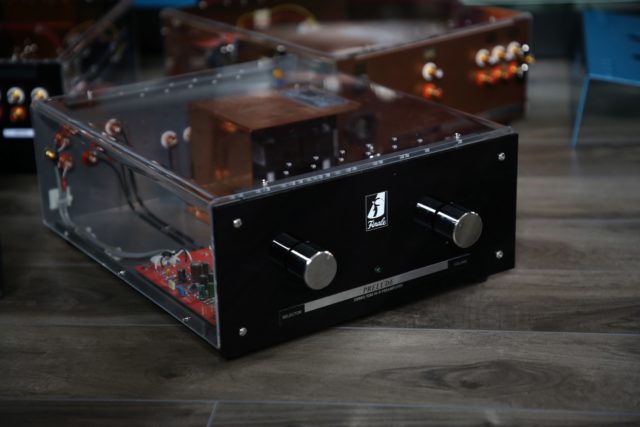 But a Wall of Sound review opportunity came up to try something different: a Canadian-made hybrid tube preamplifier, which includes tubes and a solid state output stage. I could pair it with my trusty NAD C275BEE power amplifier and finally try tube gear, without going all in on an entirely tube system. My reading of tube preamplification is that its effect would be to push my listening back towards the analogue realm with the hopes of not losing the clarity, detail, transparency and taut instrument separation that I crave.
But a Wall of Sound review opportunity came up to try something different: a Canadian-made hybrid tube preamplifier, which includes tubes and a solid state output stage. I could pair it with my trusty NAD C275BEE power amplifier and finally try tube gear, without going all in on an entirely tube system. My reading of tube preamplification is that its effect would be to push my listening back towards the analogue realm with the hopes of not losing the clarity, detail, transparency and taut instrument separation that I crave.
The Finalé Audio Prelude is a beautifully made preamp, that looks like a labour of love of its designer, Frank Ng, of Finalé and Triode Labs. This version is the Prelude FF version. The fully equipped FFX version includes a few more upgrades but this version gives the listener about 99% of what the upgraded FFX preamp can deliver. In correspondence with Frank, he contends that “the Prelude just blows life into the music that solid state can’t and we want people to hear the magic with the help of tubes.” The hybrid design is a use issue for Frank. Prelude has a fixed impedance output which allows it to be easily mated to all manner of solid state and tube power amplification. That versatility should allow the Prelude to integrate with all kinds of systems.
The Setup
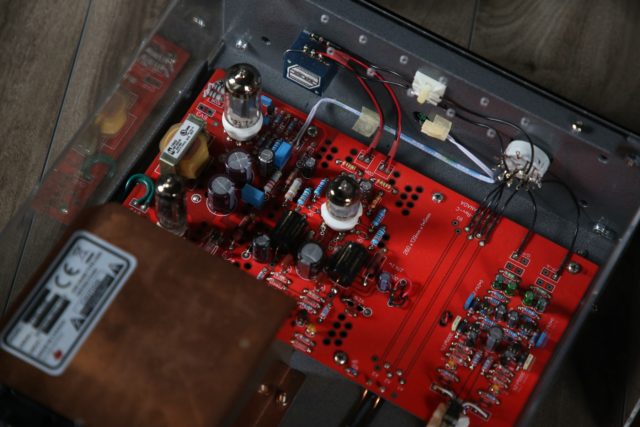 The Finalé Prelude arrived with an acrylic cover as opposed to the standard black metal cover. This allows one to see the glow of the tubes and observe the inside. I plugged it in to my PS Audio Duet power center and I connected the Prelude to my NAD C275BEE power amplifier and swapped out my matching NAD C165BEE preamp. I then connected my other three source components to the Prelude, a rebuilt Thorens TD145 Mk-I turntable with a Jico NEO-SAS Cartridge (replacing the original Shure), an Oppo 105 universal transport, and my combination exaSound e20 mk I DAC and exaSound PlayPoint streamer with sBooster power supplies. All of my equipment uses Audio Sensibility Testament power cables courtesy of Canadian cable guru Steven Huang, with Signal Cable Analog One RCA interconnects. I then turned it on and played a smattering of high resolution digital files on repeat at very low volume for a couple of days to break in the preamp. Everything is connected to my Soliloquy 5.3 speakers via bi-wired Signal Cable Analog Two speaker cables.
The Finalé Prelude arrived with an acrylic cover as opposed to the standard black metal cover. This allows one to see the glow of the tubes and observe the inside. I plugged it in to my PS Audio Duet power center and I connected the Prelude to my NAD C275BEE power amplifier and swapped out my matching NAD C165BEE preamp. I then connected my other three source components to the Prelude, a rebuilt Thorens TD145 Mk-I turntable with a Jico NEO-SAS Cartridge (replacing the original Shure), an Oppo 105 universal transport, and my combination exaSound e20 mk I DAC and exaSound PlayPoint streamer with sBooster power supplies. All of my equipment uses Audio Sensibility Testament power cables courtesy of Canadian cable guru Steven Huang, with Signal Cable Analog One RCA interconnects. I then turned it on and played a smattering of high resolution digital files on repeat at very low volume for a couple of days to break in the preamp. Everything is connected to my Soliloquy 5.3 speakers via bi-wired Signal Cable Analog Two speaker cables.
The Build Quality
 The first thing that will strike you about the Finalé Prelude is the quality of craftsmanship, with a beautiful metal tuxedo black faceplate, silver-gray Hammertone chassis and stainless steel selector and volume knobs. Unlike a lot of tube preamps, this one has a minimalist aesthetic, which fit in nicely next to my industrial matte black power amp. Even the inside is a work of art. It includes a standard G6Z4 rectifier tube, Mundorf Supreme Silver Gold Oil coupling caps, a Sylvania 2C51 vacuum tube, and a 12BH7 tube. Frank Ng built this model around the classic Western Electric 396a tube, which is not included, but is an easy upgrade for those wishing for that classic organic NOS sound. My review model also included the clear acrylic cover which allows for viewing of the glow of the tubes while still protecting the electronics. The Prelude is also designed to work with both tube and solid state power amplification. It is not as dependent on speaker efficiency as other tube gear and is good for driving all kinds of amps and speakers as a result of the transistor hybrid output which gives it accurate impedance matching ability.
The first thing that will strike you about the Finalé Prelude is the quality of craftsmanship, with a beautiful metal tuxedo black faceplate, silver-gray Hammertone chassis and stainless steel selector and volume knobs. Unlike a lot of tube preamps, this one has a minimalist aesthetic, which fit in nicely next to my industrial matte black power amp. Even the inside is a work of art. It includes a standard G6Z4 rectifier tube, Mundorf Supreme Silver Gold Oil coupling caps, a Sylvania 2C51 vacuum tube, and a 12BH7 tube. Frank Ng built this model around the classic Western Electric 396a tube, which is not included, but is an easy upgrade for those wishing for that classic organic NOS sound. My review model also included the clear acrylic cover which allows for viewing of the glow of the tubes while still protecting the electronics. The Prelude is also designed to work with both tube and solid state power amplification. It is not as dependent on speaker efficiency as other tube gear and is good for driving all kinds of amps and speakers as a result of the transistor hybrid output which gives it accurate impedance matching ability.
My expectations of the sound of the preamp were undefined, given the limitations of my system. I know it well and I know what to expect from my gear but I was fairly cautious about what effect hybrid tube preamplification would have on my system. Would clarity and transparency be sacrificed for a warm glow and mushy sound? I am happy to report that is not what happened.
After two weeks of listening to music with the Finalé Prelude, it overwhelmingly exceeded my expectations.
Listening
After a few days of break-in, I decided to do some critical listening. I always start with my first test track, an audiophile and hi-fi staple, Your Latest Trick, Dire Straits’ fourth song from Brothers In Arms (DSD from MFSL SACD).
Randy Brecker’s opening trumpet solo sounded bigger and deeper than it had with my NAD preamp, and Mark Knopfler’s vocals seemed less recessed, as if the Prelude had given more balance to my fairly laid back soundstage. The depth that I love was still there but it sounded more natural. Bass was about the same as before but the low end did not seem to be sacrificed. Where I noticed the biggest change was the drums. Omar Hakim’s perfect beat was less digital on this classic digital recording and much more analogue sounding. The whole effect was to give a touch of warmth to a recording known for its precise studio engineering, but I detected no degradation in clarity or transparency.
Next I moved to Shelby Lynne’s title track from Just A Little Lovin’ (DSD from the Analogue Productions SACD). This time the vocal was what I craved, sounding almost exactly like the vinyl LP, with the sibilants rolled off ever so slightly and the vocal imaging front and centre. This time, the bass was the star. Kevin Axt’s outro groove sounded more extended. I immediately listened to the track again.
I then turned to a modern jazz recording, Joshua Redman Quartet’s Come What May (24/96 digital download from Nonesuch/HDtracks). This 2019 release is one of the best sounding jazz recordings I have heard and has fantastic Greg Calbi mastering. The instrument separation is the star here on the title track as Redman’s horn plays off Aaron Goldberg’s piano and the bass and drums kick in from the left and right of the soundstage respectively. With the Prelude, the sound was the most musical and involving I had heard it.
So far I was sold on the Prelude’s sound and how it accompanied the solid state gear. But how would it handle less audiophile recordings, rock and pop tracks, and streaming from Tidal? Two of the most difficult songs in my system that seem to tip up into sibilant and almost unnatural territory are The Postal Service’s The District Sleeps Tonight (24/44 digital download from the Deluxe 10th Anniversary Sub Pop edition of the album Give Up) and Bruce Springsteen’s My City Of Ruins (16/44 from the Columbia CD version of the album The Rising).
Through my iPad or on YouTube, both of these tracks sound fine at reasonable volume but in my system, the vocals are so harsh in parts that I find them unlistenable sometimes. This is where I really noticed the tube effect. While not totally correcting flaws in the recordings, the
vocals on both tracks relaxed and that digital harshness for the most part vanished. I was listening for the sibilant triggers in both tracks and while they were still there, they were not as distracting, but now seemed essential parts of the recording.
Having jumped around with various tracks, the Prelude had put me in a mood to listen to a Phil Ramone engineered album. Ramone’s production was probably the first I heard that really showcased great studio sound and wizardry with vocals. That aforementioned Shelby Lynne album, Paul Simon’s Still Crazy After All These Years, the test pressing of Bob Dylan’s Blood On The Tracks are all Ramone productions in whole or in part. But the Prelude was calling for Billy Joel’s 52nd Street. I have 52nd Street in every format imaginable, so I tried the 40th anniversary Japanese SACD deluxe edition with the excellent Ted Jensen remastering.
With the Prelude, this is the closest I have heard this album in a digital format to its original vinyl sound. I just let it play and was floored by how much this hybrid tube preamplification could make everything sound more musical.
Finally, in the digital and streaming realm, I thought I better try some tracks through Tidal and my streamer. I started with Taylor Swift’s The Last Great American Dynasty from her album folklore (16/44 Tidal Master from Republic). Again, same effect as before, the musicality was
enhanced and the digital glare was lowered.
I then tried Little Village’s Big Love (16/44 Tidal Master from Reprise), an underrated track from the self-titled John Hiatt/Ry Cooder/Nick Lowe/Jim Keltner collaboration from 1992. The decay of the bass and guitar was spellbinding and Hiatt’s voice just hung in the air afterwards.
Wanting to sit back and listen again to a whole album, I then streamed Springsteen’s Western Stars (24/96 from Columbia HDtracks). It had me leaning forward, a sure sign that I was being drawn into that laid back soundstage.
I then put on the Bob Ludwig remaster of Steely Dan’s Gaucho on the Geffen SACD. The crispness and exactness of Rick Marotta’s drums on Hey Nineteen sounded sublime, and Donald Fagen’s vocals had more presence than with my solid state preamp. Again, I let the album run, simply enjoying Fagen’s and Walter Becker’s laborious and meticulous constructions – accompanied by some of the finest session players ever.
In my enthusiasm to listen to every one of my audiophile test tracks and styles of music, I had neglected to try out Finalé Audio’s well known phono stage. This is what they are known for, a versatile but audiophile grade phono stage that fits most turntables, loads and cartridges. I decided to start with an album I had just received, the 2019 Analogue Productions Bernie Grundman Quality Record Pressing of Bill Evans At The Montreux Jazz Festival. This fabulous 1968 recording is one of the best live jazz recordings I have heard. With the Prelude connected to my Thorens deck, it maintained the same intimacy I had known with this recording but the analogue soundstage felt deeper, more holographic. The interplay between Evans and Eddie Gomez on bass and Jack DeJohnette on drums is so involving. As I closed my eyes, it felt like I was in the fifth row surrounded by the approving audience at Casino de Montreux. It made me appreciate how good this second great Bill Evans Trio really was, and to compare it to Sunday At The Village Vanguard and Waltz For Debby with Scott LaFaro and Paul Motian from seven years earlier.
I followed the Bill Evans LP with a great classical recording, Seung-Jin Cho and the London Symphony Orchestra’s performance of Chopin’s Piano Concerto No. 1. This wonderful Deutsche Grammophon pressing had a very nice balance to it and I marvelled at how natural the
piano sounded. The Prelude’s phono handled classical and orchestral with aplomb. Not to be outdone, I decided to spin a standard non-audiophile LP.
My original Warner Bros. pressing of James Taylor’s Greatest Hits is like an old friend. We don’t talk every day but when we do it’s right back where we left off. Walking Man sounded just as intended, with Taylor’s vocals rich and warm.
After so much listening on record, CD and high resolution streaming, I decided to finish my review with a shootout of one of my favourite albums, Kenny Burrell’s Midnight Blue. I started with my Music Matters Kevin Gray vinyl LP. This dead quiet pressing sounded magnificent with the Prelude. I then switched to the 24/192 HDtracks Alan Yoshida mastered Blue Note digital download version. It always struck me as the more digital sounding version but this time, it was a lot closer to the LP. Finally, I tried my Analogue Productions SACD. I have always given the nod to the record but the SACD proved the winner as it combined warmth and even more detail through the Finalé preamplification.
Tube Comparison and Power Amplifier Swap
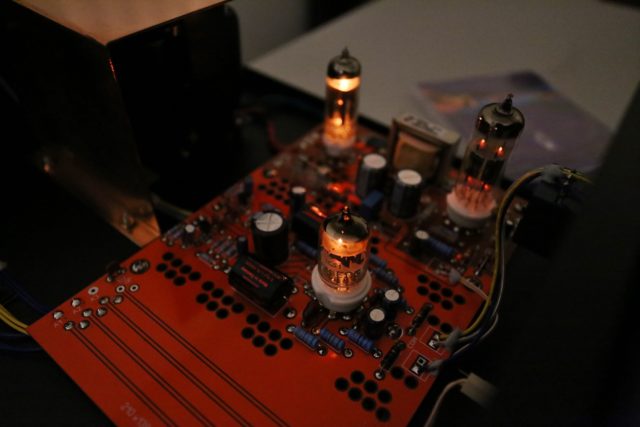 This listening was done with the stock Sylvania 2C51 tube. Frank Ng very kindly mailed me an original NOS Western Electric 396a vacuum tube to showcase the realism of this legendary tube. For the review I decided to compare the same tracks and albums now with the Western Electric tube. Was it night and day? Not quite, but it added even more natural depth to the music. I am still trying out the NOS tube to compare but I do think the stock tube sounded great. I also swapped out my NAD power amp and tried a Mitchell & Johnson 800 series power amplifier. Playing the same critical listening tracks and albums, it sounded nearly identical to the NAD. Both power amps allowed the Finalé preamp to have more of the sonic signature.
This listening was done with the stock Sylvania 2C51 tube. Frank Ng very kindly mailed me an original NOS Western Electric 396a vacuum tube to showcase the realism of this legendary tube. For the review I decided to compare the same tracks and albums now with the Western Electric tube. Was it night and day? Not quite, but it added even more natural depth to the music. I am still trying out the NOS tube to compare but I do think the stock tube sounded great. I also swapped out my NAD power amp and tried a Mitchell & Johnson 800 series power amplifier. Playing the same critical listening tracks and albums, it sounded nearly identical to the NAD. Both power amps allowed the Finalé preamp to have more of the sonic signature.
Verdict
I loved every aspect of the Finalé Prelude hybrid tube preamplifier. The only limitation I felt was that it made me think more about synergy among my existing connections, in particular the interconnects and if I could improve the sound even more with interconnects that gave a touch more clarity and detail, especially on vocals. Many of us are trying to get a natural vocal sound but with holographic detail. That continues to elude me a bit in my system. The Prelude improved the vocal imaging and naturalness of vocal recordings but not enough to rectify shortcomings with my equipment. This is of course a constant problem for those of us with ‘upgrade-itis’ and those trying to get high end performance with some budget compromises.
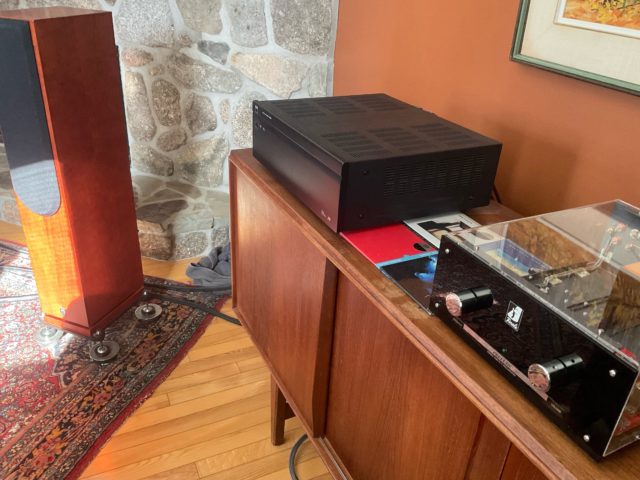
The Prelude proved to be a better performing preamp than my tried-and-true NAD C165BEE. This should not be a surprise given the Prelude’s price tag and the quality of the build. What really impressed me is that this hybrid design gave me the tube effect but without sacrificing detail and clarity. For someone who listens primarily in the digital realm, its effect was likely more noticeable than for the strictly vinyl listeners. The phono stage did not disappoint either. While I was skeptical of what hybrid tube preamplification might do to the sound, the Prelude has an incisive sound. It is not as lush and forgiving as to make everything sound tube-y. But it does render recordings more realistic and musical than my experience with mid-level solid state preamps. One might have to go up to a considerably higher price point among solid state preamps to get these attributes. I was also able to ascertain the limitations upstream from the preamp. In other words, as I listened more, I began to ‘hear’ my interconnects and their limitations. Downstream, the effect on the sound was an overall improvement in every regard. A slightly bigger soundstage, a more involving and immersive musical experience, and more natural and less digital vocals and instrumentation.
Bear in mind that I am comparing this to a good performing NAD solid state preamp around the $1,200 US price range. So for a preamp at three times the price, it should be a more refined product. What has surprised me with the Prelude is that it is not “tubey” like my preconceived notions. It delivered about the same level of detail, clarity and transparency for bass, guitar, piano and horns as my solid state preamp but offered a sweeter midrange and high end, especially on vocals with sibilance or poorer and more harsh modern recordings with lower dynamic ranges and compression. The sonic character was not as different as I expected from the NAD preamp, but it certainly had the effect of giving digital music more musicality, and moving it further towards that analogue realm. On all recordings, it rendered a bigger, deeper soundstage. So my concern that incorporating the Prelude would render music too sweet and unfocused was put to rest. In fact, it accomplished what I had been looking for with my system: maintaining the transparency and clarity but making vocals and instrumentation sound more natural and smoothing out the last vestiges of digital harshness.
For those audio aficionados hoping to take their systems to the next level of refinement, without breaking the bank, the Finalé Prelude hybrid tube preamplifier is a gem. It delivers a high end sound that one would associate with separates in a higher price range. It blended well with my $1,500 USD power amplifier and produced a more refined but also more relaxing and musical sound.
For vinyl listeners, especially those who already have tube gear, consider the Prelude as an upgrade in the preamplification department. I would recommend this preamp for those with entry level tube gear looking to make an upgrade. This is not your sub-$1,000 tube amp. It delivers much more than that. From my entry level phono stage, the Prelude offered a bigger sound and more detail. I detected more of the music coming from my needle to the speakers. Nuances that I did not hear previously were present on jazz and rock recordings alike.
Conclusion
I think what struck me most about the Prelude is the importance of the preamplifier component. Yes, you need good source components and amplification and speakers that match in terms of impedance and sound. But the preamp is the central nervous system of high fidelity and it can take the upstream signal and really transform it into something unique downstream. The bottom line is that the Finalé Prelude allowed me to get back to the music and instead of listening for perfection and flaws, I was just…listening. A highly recommended component. In terms of value, I did ask Noam about the Gold Star awards, and we agreed that, this being my first review, we should perhaps not be over the top with the accolades.
https://www.finaleaudio.com/prelude
Retail Price: $3500-5500 USD
Loan unit from Stereo Untypical
Specifications & Features
- The preamplifier is based on a single 396a tube (also equivalent types such as 5670 and 2C51)
- 4X of Gain (Finale’s preference is for lower gain vs higher distortion)
- 2V Output at Nominal, 0.1% THD-X
- Designed for triode, tube and other low-powered amplifiers, or solid state power amplification
- Lower gain design equates to fewer parts and fewer tubes and therefore less phase shift and signal changes
- Tube regulated, by the powerful 12BH7 / ECC99 (or the 12AU7 — though the more powerful 12BH7 will last longer in this position)
- Tube rectified, by a 6Z4 rectifier tube, a 7-pin miniature tube that is affordable and reliable
- AC coupling power supply (better than 90 db S/N Ratio with a NOS Western Electric 396a) with input filtering choke for quiet operation
- Hammond Canadian-made power transformer
- CMC USA Gold Plated RCAs (3 Pairs of Inputs, 1 pair of Outputs)
- Mundorf Supreme Silver Gold Oil coupling caps
- Alps Japan Blue Volume Pot
- Premium Selector
- High-quality transistors (hybrid pre-amplification) used for impedance conversion. When combined with tubes at the voltage amplifying stage, these allow the amp to drive all kinds of power amplifiers
Editor’s Note: Welcome Jamie to the Wall of Sound roster, and congrats on your review!
Disclosure: Wall of Sound Editor Noam Bronstein is a Finale Audio dealer.


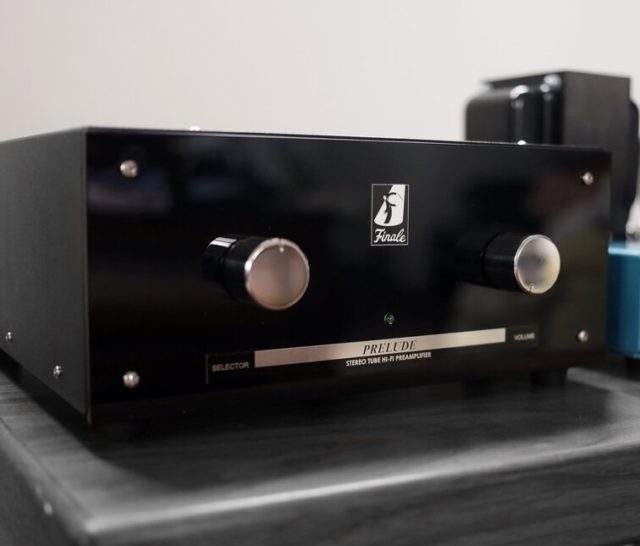











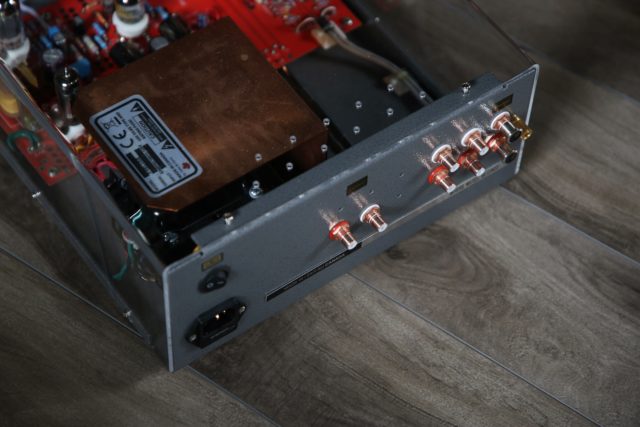



Hi Jamie,
Welcome to the tribe of Wall of Sound writers! You did a nice job on your first outing and we hope more will follow.
Finale gear is really top notch stuff and so not surprisingly you were swept away. We are fortunate to have in Canada such manufacturers who are dedicated to serving the music.
Best wishes and Cheers,
David Neice
Great review Jamie! I’ve known Jamie for a few years now and have been impressed with his knowledge of music. He has a keen ear and will be a valuable contributor to the Wall of Sound and it’s readers. Congrats Jamie!
Welcome aboard Jamie. If you’ve been bitten by the tube bug and fancy a bit of DIY there are two preamp (one line and one phono) build series by a very thorough, diligent and modest author on this very website.
Great article
Thank you David, Mark, Steve and Nigel for the kind and supportive comments!
Jamie